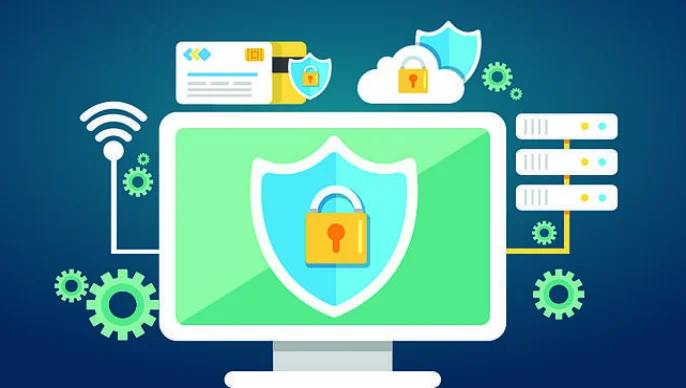-
Ροή Δημοσιεύσεων
- ΑΝΑΚΆΛΥΨΕ
-
Blogs
-
Ομάδες
Zero Trust Approach (ZTA): A Cybersecurity Model for Secure Access

Introduction
As cyber threats continue to evolve, traditional perimeter-based security models are proving inadequate. Organizations must shift to a more robust and dynamic cybersecurity framework: the Zero Trust Approach (ZTA). Rooted in the principle of “never trust, always verify,” ZTA ensures that access is granted based on strict authentication and continuous monitoring rather than assumed trust. This article explores the core principles, six pillars, benefits, challenges, and implementation best practices of the Zero Trust security model.
What is Zero Trust Security?
Zero Trust is a cybersecurity framework that requires all users, devices, and applications—whether inside or outside the network—to be authenticated, authorized, and continuously validated before gaining access to systems or data. Unlike traditional models that assume everything within the corporate network is trustworthy, Zero Trust enforces least-privileged access controls.
Key Principles of Zero Trust Security:
- Never Trust, Always Verify – No entity is automatically trusted, regardless of location.
- Least Privilege Access – Users and applications receive only the minimum access necessary.
- Microsegmentation – Networks are divided into smaller segments to limit lateral movement.
- Continuous Monitoring & Authentication – Regular verification of user and device behavior.
- Assume Breach Mentality – Systems are designed to detect, contain, and mitigate breaches proactively.
The Six Pillars of Zero Trust Security
A successful Zero Trust model is built on six foundational pillars:
1. Secure Networks
- Network segmentation prevents unauthorized lateral movement.
- Software-defined perimeters (SDP) replace traditional VPNs.
- Encrypted traffic protects data in transit.
2. Secure Identities & Access Management
- Multi-factor authentication (MFA) ensures stronger identity verification.
- Single sign-on (SSO) enhances access control efficiency.
- Behavior analytics detects anomalies in user access patterns.
3. Secure Endpoints
- Endpoint detection and response (EDR) monitors device activities.
- Zero Trust Network Access (ZTNA) replaces traditional remote access methods.
- Device posture assessments verify compliance before granting access.
4. Secure Applications & Workloads
- Microservices security ensures individual application components are protected.
- Runtime application self-protection (RASP) detects real-time application threats.
- DevSecOps practices integrate security into development pipelines.
5. Secure Data
- Data classification and encryption ensure sensitive information is protected.
- Data loss prevention (DLP) solutions prevent unauthorized data transfers.
- Zero Trust data access (ZTDA) enforces granular access policies.
6. Visibility, Analytics & Automation
- SIEM (Security Information and Event Management) provides real-time insights.
- Artificial intelligence (AI) and machine learning (ML) detect suspicious activities.
- Automated response mechanisms mitigate threats with minimal human intervention.
Benefits of Implementing a Zero Trust Strategy
Adopting a Zero Trust approach offers numerous security advantages:
- Enhanced Security Posture – Reduces attack surfaces and limits unauthorized access.
- Reduced Risk of Data Breaches – Protects against insider threats and external attacks.
- Improved Compliance – Aligns with regulatory requirements like GDPR, HIPAA, and NIST.
- Better Visibility and Control – Enables continuous monitoring of user and device activities.
- Stronger Remote Workforce Security – Secures remote access without relying on outdated VPNs.
Challenges in Adopting Zero Trust
Despite its benefits, implementing Zero Trust comes with challenges, including:
- Complexity in Integration – Requires coordination across multiple security tools and teams.
- Initial Investment Costs – Requires advanced identity management, automation, and analytics.
- User Experience Impact – Strict authentication may introduce friction for end-users.
- Legacy Systems Compatibility – Some older applications may not support Zero Trust principles.
Zero Trust Frameworks and Standards
Several industry frameworks guide organizations in implementing Zero Trust effectively:
- CISA Zero Trust Maturity Model – A roadmap for federal agencies and enterprises.
- NIST SP 800-207 – Provides a standardized approach for Zero Trust implementation.
- SABSA (Sherwood Applied Business Security Architecture) – Aligns Zero Trust with business objectives.
Best Practices for Implementing Zero Trust
- Start with Identity & Access Management (IAM) – Enforce strong authentication policies.
- Adopt a Least Privilege Model – Grant only necessary access to users and applications.
- Segment Networks & Workloads – Prevent unauthorized lateral movement.
- Implement Continuous Monitoring – Use AI-driven analytics to detect anomalies.
- Integrate Security Across IT Infrastructure – Ensure security across endpoints, cloud, and data centers.
- Leverage Zero Trust Security Tools – Utilize solutions like ZTNA, SDP, and EDR for comprehensive protection.
Conclusion
The Zero Trust Approach (ZTA) is an essential cybersecurity model that shifts from traditional trust-based security to a verification-driven framework. By implementing Zero Trust principles across networks, endpoints, applications, and data, organizations can strengthen their defenses against modern cyber threats.
Embracing Zero Trust is not just an option—it’s a necessity for securing digital assets in today’s interconnected world. Start your Zero Trust journey today and protect your organization from evolving cyber risks.






